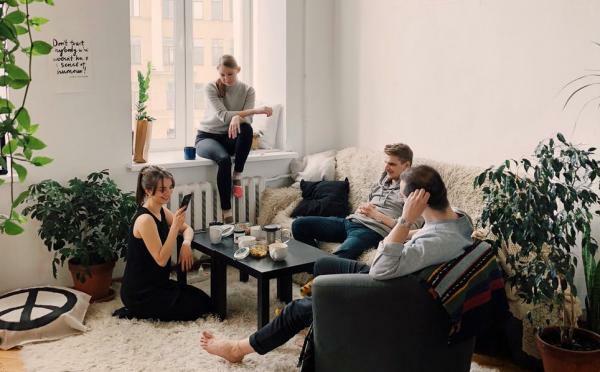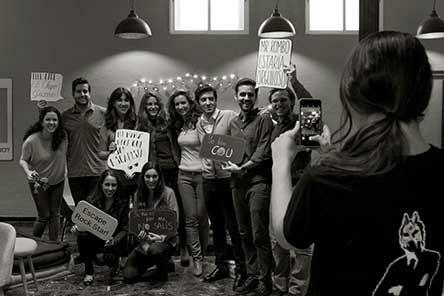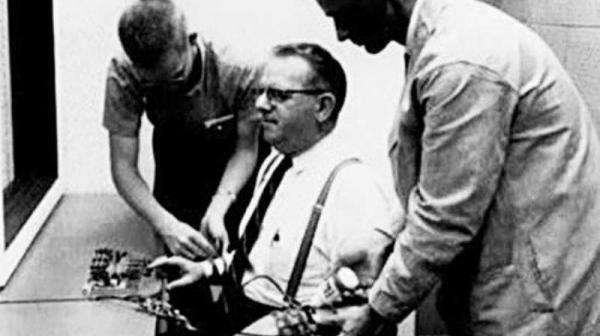
Group dynamics are structured group activities that pursue a goal. These group exercises can be used in different settings and have different formats: from family therapy to games to enhance teamwork in the workplace, through workshops on values in classrooms of institutes. What are group dynamics for? They are used, especially, to learn in an experiential way, that is, to experience a situation that encourages personal and / or work development.
In this Psychology-Online article, we expose 10 examples of group dynamics for adults practices with techniques and tips to apply them. We cite the instructions and benefits of fun, emotional and practical group dynamics.
Index
- Presentation dynamics
- Dynamics to get out of the comfort zone
- Escape room
- Negotiation dynamics
- Role-playing to implement new behaviors
- Construction exercise
- Thank you dynamics
- Trust exercise
- Dynamics of priorities
- Network dynamics
Presentation dynamics.
When a new group of people is created, either in a class or in a work project, a presentation round is usually carried out in which basic personal data is provided. By preparing a presentation dynamic, we will make it more original, more entertaining and that conversation can arise in a more natural way. Thus, people will begin to meet and interact. There are many types of integration dynamics. Some
- "What is it that you don't expect to happen?": Normally, in presentations, expectations are asked. We can surprise you with a different question.
- "If you were a desk object, what would you be?": it is also usually asked about hobbies or characteristics of the person. We can ask it this way to receive original and funny answers. The concept of the desktop object is related to an office job, but we could replace it with a category according to the place. For example, "What kind of vegetable would you be?", Would serve to present to the students of a cooking course.
- Match the description to the person: Another example of fun dynamics consists of preparing cards with the name and a short presentation of each person written by herself. It is about guessing who each description belongs to. Questions can be asked, but only "yes" or "no" can be answered. To add interest, we can request curious or unexpected information in the descriptions, ideal to break the ice.
Dynamics to get out of the comfort zone.
This group dynamic for adults has very simple instructions: choose one person from the group and act like it. However, it is not easy to do, observation and imitation come into play. Behaving the way someone else would, in the first place, we practice empathy, but above all, we explore other facets, other registers and other ways of functioning. In some, we may feel real discomfort, experiencing resistance to get out of the comfort zone.
This is one of the dynamics for adults that can be fun in a more relaxed environment, such as a group of friends, and can also be put into practice in learning and development groups personal.
Escape room.
Whether for groups of friends, families or work teams, escape games are an original and fun idea. This type of group dynamic consists of solve tests in a space set in a story. More and more are being used to celebrate birthday and for activities of team building. Participating in an escape room reports several Benefits: encourages teamwork, improves communication, enhances creativity, works attention, stimulates logic and resolution, enhances imagination, improves interpersonal relationships... It also allows observing and assessing the skills of the participants, such as leadership skills, problem solving or assertiveness.
The Rombo Code, the escape room nº1 in Spain, has several games with innovative rooms, varied puzzles and many surprises. You will find them in Madrid, Barcelona, Seville, Bilbao, Coruña and Jaca. Will you be able to get out on time?

Negotiation dynamics.
A very common exercise to put into practice communication skills and the ability to persuade is play "Lost at sea". Participants are given a list of 15 objects that they must prioritize based on their importance to survive a lost navigation on the high seas. Then, the group must negotiate to make a single priority list. This group dynamic for adults or adolescents allows us to observe decision-making, assertiveness, creativity, teamwork, leadership skills and conflict resolution skills.
A technique that can be used in this type of group dynamics for adults is to assign a observer: a person who observes and takes note of the behaviors and strategies used by the merchants. This person will serve as a mirror for the participants.
Role-playing to implement new behaviors.
In the dynamics of negotiation, debate and group exercises, perhaps thanks to the feedback from others, become aware of unsatisfactory behaviors. For example, having been too passive or communicating aggressively. Once we have become aware of those characteristics that we want to improve, we must practice the behavior we want to learn or enhance. Practicing is the way to make real changes. Therefore, what the group will do is simulate the situation and give the person the opportunity to act differently, thus seeing how the response of the others changes. We can observe to what extent our actions influence the attitudes of others.
Construction exercise.
This adult dynamic is great for work teams, both in college and in the workplace. The activity is broken down into two parts:
- First, each person will be offered paper, scissors, and glue, and asked to perform a tower as high as possible in 30 minutes. The towers will be measured.
- Next, groups of 3-6 people will be organized. The same slogan will be given, but this time as a team.
Most likely, the towers are higher when we can share ideas, help each other, motivate ourselves, mix strengths, support each other, feel safer and more secure..., in short: teamwork. This fun group dynamic will remind us of the benefits of building together.

Thank you dynamics.
This group dynamic is perfect for occasions when we want to work on personal development and strengthen interpersonal relationships. Practice gratitude It helps us appreciate what we have, connects us with a sense of well-being, and helps us focus on the positive.
This group dynamic is to be done as a family or in small work groups, since a certain level of trust and intimacy is needed. It consists of telling other people what we want to thank them for. According to Dr. Martin Seligman, a researcher in the field of positive psychology, write a thank-you letter another person positively and significantly impacts well-being and happiness scores. In addition, we will ensure that whoever receives it feels valued and recognized.
- A small thank you can be made to all members of the group.
- Or also that each person write a letter to only one person. A good idea is to use this exercise on the invisible friend.
Confidence exercise.
Do you trust your partner, your family members or your colleagues? We will verify it with this group dynamic for adults that is applied both in couples therapy and in personal growth groups. It is also recommended for families and work teams. We will present two variants of the trust exercise:
- Close your eyes and let yourself go. In this dynamic, we will put a blindfold over a person's eyes so that they cannot see. You must reach the other end of the room dodging objects with the help of others. They must give clear and precise instructions and give support to the person who does not see so that they can trust.
- Let yourself fall and trust others. In this exercise, the person will stand up straight and fall backwards. Behind, you will have arms ready to hold.
These fun group dynamics for adults encourage bonding, trust, cooperation and teamwork.
Dynamics of priorities.
This group activity aims to get to know ourselves better and to know more about others. A very useful exercise to do with family and friends to open ourselves on a personal level through a fun game.
It consists of making a list of the 10 things you would take to a desert island. They must be very concrete things. Participants must present their list and share opinions. To continue the exercise, we must eliminate 7 things and stay with only 3. They will be the 3 things that we value the most, so your scale of values and your priorities can be perceived. We can share feelings, impressions and conclusions derived from the activity.
Dynamics of the network.
This fun group dynamic is a good exercise to foster teamwork, group cohesion, and trust in others. Four members of the group place their arms extended forward and bend the right arm, making the right hand hug the left elbow. They should then come together and hold each other's arms in a web. This net should serve as a chair to support the weight of another member of the group. This is one of the group dynamics for adults or adolescents that has a moral: joining forces, we can!
All the proposed adult dynamics can be varied to suit the needs of the group. All the dynamics are designed to be face-to-face, but some could be adapted to be done online. It is also a way to encourage imagination and creativity.
This article is merely informative, in Psychology-Online we do not have the power to make a diagnosis or recommend a treatment. We invite you to go to a psychologist to treat your particular case.
If you want to read more articles similar to Examples of group dynamics for adults, we recommend that you enter our category of Social psychology.


